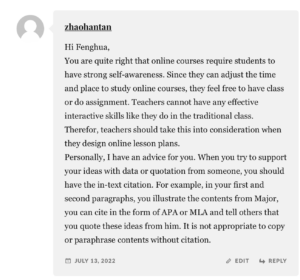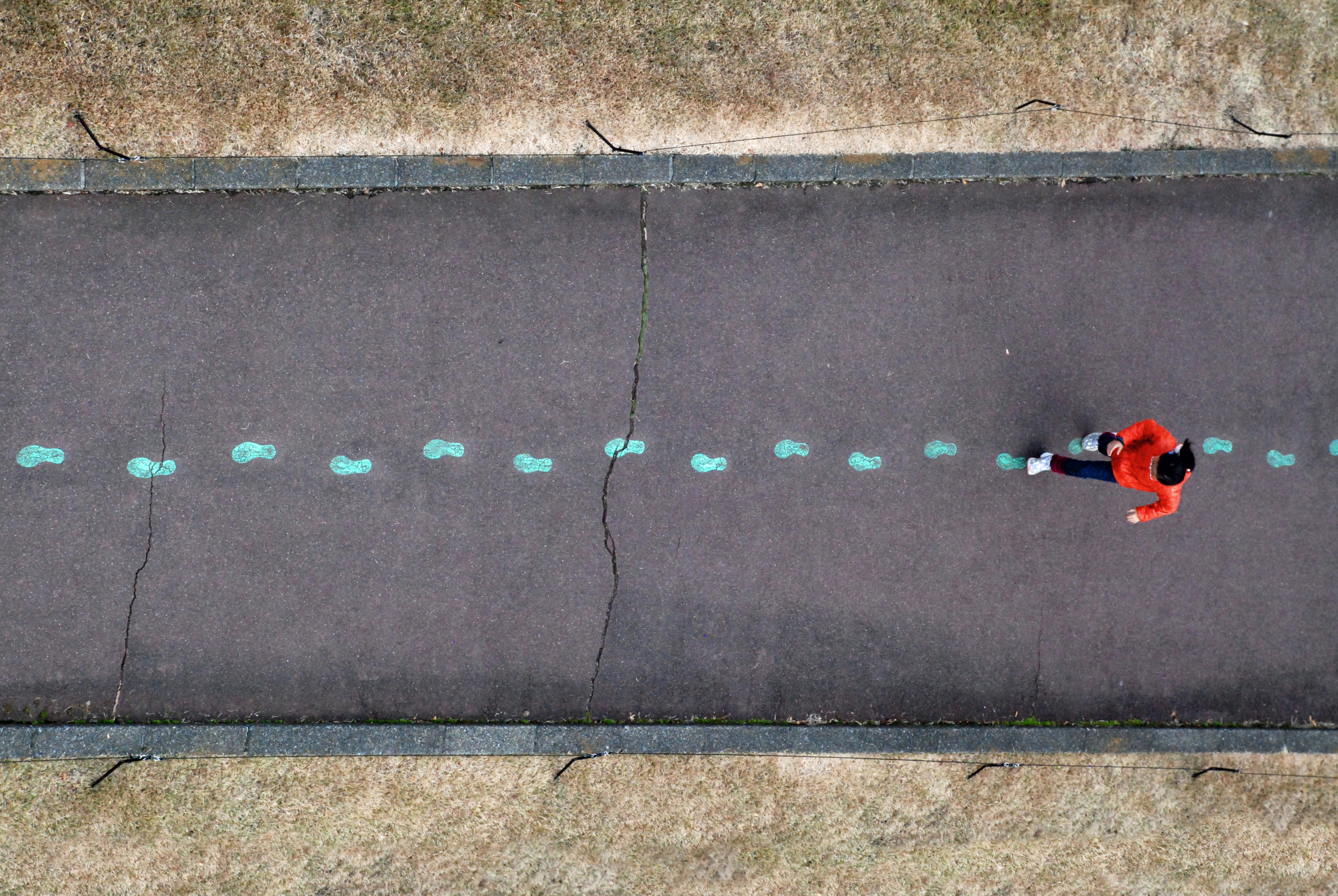Part1: Evidence and Reflection on My Learning
Outcome 1:Describe the potential of human-centered learning in distributed and open learning contexts
From my topic 1, I talked about how EdTech could be psychologically harmful to students and violate personal information(Regan & Jesse, 2019). Students should always protect their personal privacy. And I think both traditional learning and blended learning should focus on the interaction between students and teachers. I raised my question about whether adding levels to the educational structure is beneficial or more distracting to students. Because from students perspective, traditional learning is creative enough and some traditional teaching activities are already distracting.
Here is some interesting comments:




Some people agree with me, some don’t. I don’t think there is a right answer. Everyone has a choice about how they would like to learn.
Outcome 2&3: Explore and engage with current literature on the distributed and open education movement. Critically reflect on and articulate concepts around modality, pedagogy, and access, including distributed and open learning theory, online and open learning history, privacy laws, online learning communities, open research, and open data.
In Topic 2, I clearly understand the difference and history between open and distributed learning.

There are various researches showed that online learning may produce better results than traditional instruction(Major 2015). I think students should have a strong self-awareness because they need to concentrate to complete assignments on time and participate in online classes. Of course, the difficulty of teachers’ teaching has also increased. How to let students accept and develop interest is their most important task. They need to communicate their teaching content clearly.
Here is some interesting comments by my pod members:



I would like to thank Hantan for reminding me that I forgot to finish my reference. After reading her comments, I edited my blog immediately.
At the same time, we created our pod project, a chart for the avatar we created, Jackson, with a very clear open and distributed learning plan.

As I mentioned in Topic1, EdTech helps students make specific learning plans and groups by obtaining students’ information. How much do students know about privacy issues? Meanwhile, when I finished Topic3, I read an article about digital redline. It is mentioned in the article that when Nina searches for information, the browser directly prevents her from accessing the information(Gilliard &Culik, 2016).
Outcome 4: Examine and reflect upon the potential for equitable access for all learners in online and open learning contexts.
In my Topic 3,I shared my own feelings about this courses.I found that in this online course, I communicated even more than the lectures. We have the opportunity to look at the work of our peers and get their opinions and suggestions. I read the article Digital Redlining, Access, and Privacy and understood what is the digital redlining. Although it protects the network environment for students, it also limits the scope of students to explore knowledge.
When I took online courses in China, I couldn’t access many academic materials due to regional restrictions. The VPN provided by Uvic was not very useful, so I finally bought another VPN to use. This invisible wall holds back many students and knowledge.
Outcome 5: Conduct research into and critically reflect upon emerging and future educational technologies
In reading the articles on TOPIC3 and 4, I gradually understand what is the OER. OER is a great resource for open learning, provides students with many cheap and even free materials. OER-enabled pedagogies allow students to continuously supplement their project, so that the content becomes richer and more completed.

I think a sustainability project is very meaningful.
Outcome 6: Practice digital, networked, and open literacies in support of learning about distributed and open learning
In this course, I use the Mattermost and Discord to communicate with my pod number.

At the beginning of the course, I used the LMS platform: Brightspace to introduce myself and published the topic 1. After that, I used the WordPress to publish the blogs. I also used google doc to complete the pod project.


I am very happy to communicate with my team members and complete the project together. It was a pleasure to spend my last class at UVIC with you. Thank you very much!
Part2:
Link to updated version of the post: https://kweng.opened.ca/topic-1-showcase-blended-learning-and-personal-privacy/
Link to original version of the post: https://kweng.opened.ca/topic-1-teaching-strategies-change/
The reason why I want to modify Blog1 is that I do not have a good understanding of open learning and disturbed learning at the beginning of the course. I wrote some absolute words. After reading and understanding, I think it is necessary to revise Blog1.
Reference:
Morris, S. M., & Stommel, J. (2018). An urgency of teachers: The work of critical digital pedagogy. Hybrid Pedagogy.
Regan, P.M., Jesse, J. Ethical challenges of edtech, big data and personalized learning: twenty-first century student sorting and tracking. Ethics Inf Technol 21, 167–179 (2019). https://doi.org/10.1007/s10676-018-9492-2
Vaughan, N. D., Garrison, D. R., & Cleveland-Innes, M. (2013). Teaching in blended learning environments: Creating and sustaining communities of inquiry. AU Press.
Major, C. H. (2015). Teaching Online – A Guide to Theory, Research, and Practice. Retrieved from http://ebookcentral.proquest.com/lib/uvic/detail.action?docID=3318874 (pp. 76-108)
Jordan, K. & Weller, M. (2017). Openness and Education: A beginners’ guide. Global OER Graduate Network.
Mays, E. (Ed.). (2017). A guide to making open textbooks with students. Rebus Community.
Gilliard, C., & Culik, H. (2016, May 24). Digital Redlining, Access, and Privacy. Common Sense Education.
Wiley, D. & Hilton, J. (2018). Defining OER-enabled Pedagogy. International Review of Research in Open and Distance Learning, 19(4).


